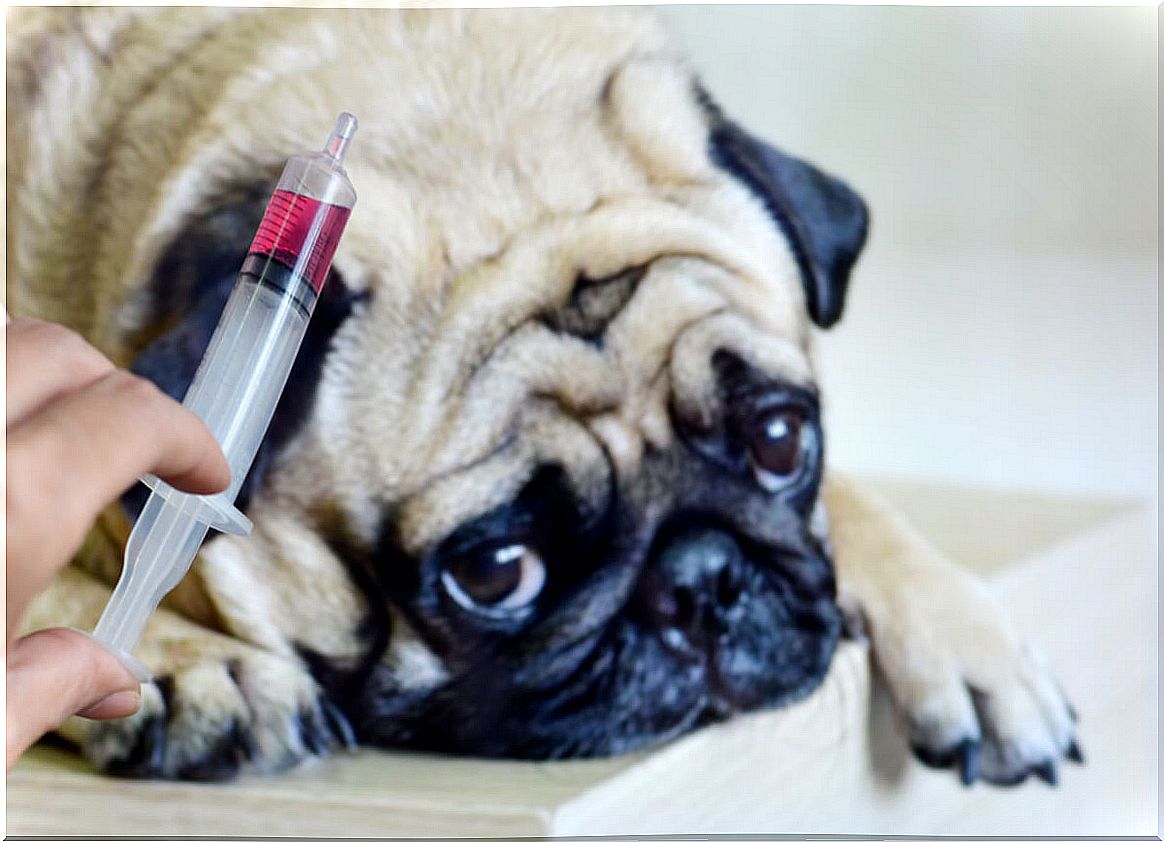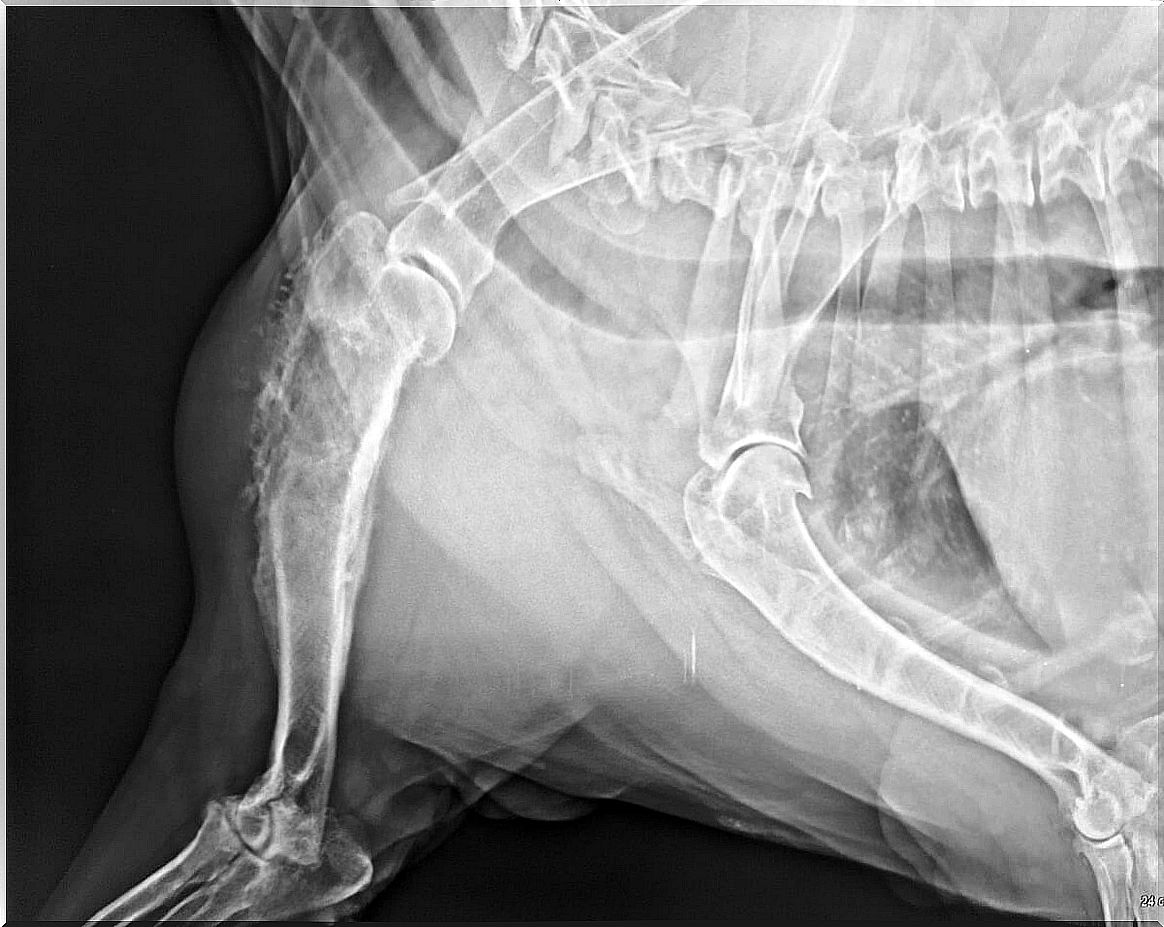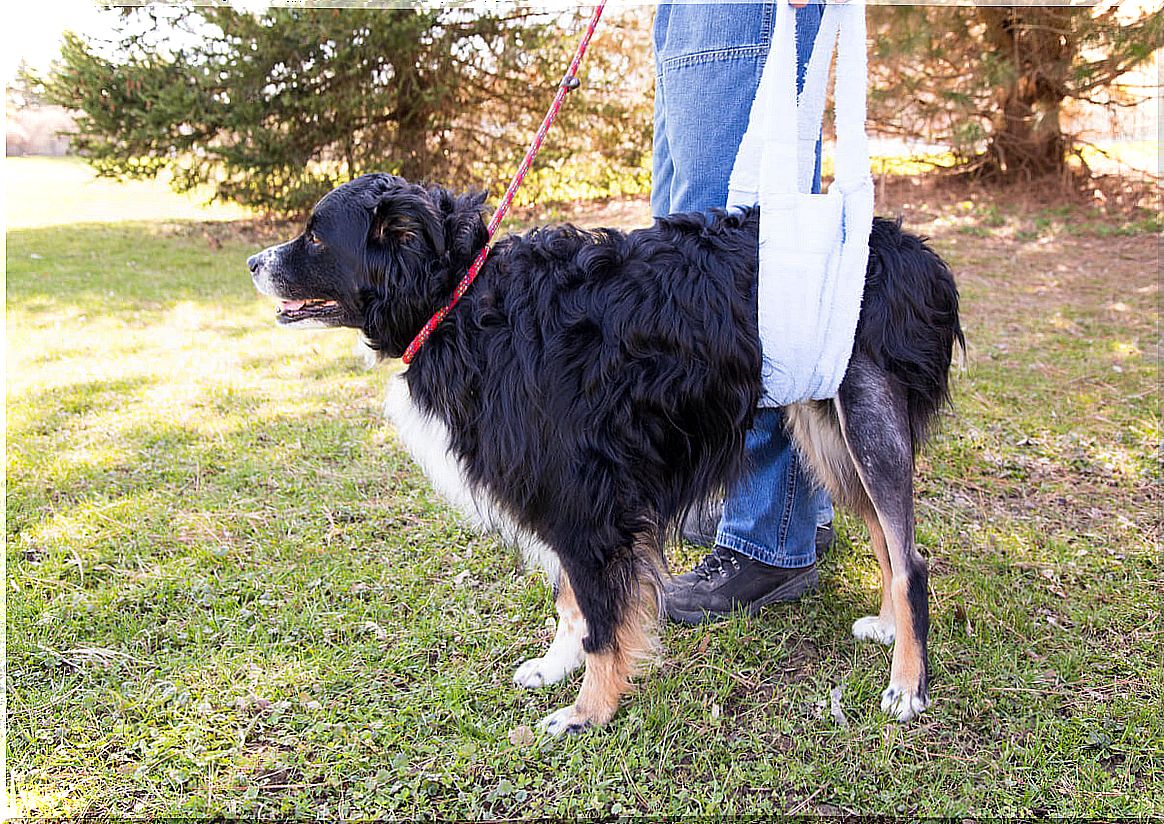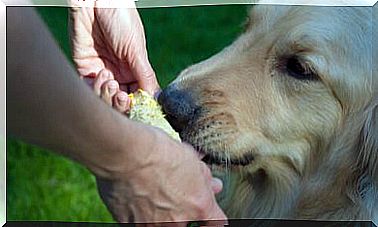Infection Bursitis In Dogs: Causes And Symptoms

Infection bursitis in dogs is inflammation of the synovial bag caused by an infectious agent. If it affects the elbow area, it is also known by the name of olecranon bursitis, referring to the name of a portion of the ulna bone.
Remember that this type of infection can affect the joints of dogs in a similar way to how it happens in people, therefore, it shares symptoms with the human variant.
Anyone who has suffered from infectious bursal disease will be well aware that this condition can be extremely painful, as well as severely hampering the normal range of motion of the affected joint.
What is the synovial bag?
The bursa is a fibrous-covered sac located over the tendons and joints. It contains a thick fluid (synovial fluid), which lubricates and protects these structures.
Synovial bags serve to reduce friction, cushioning the structure they protect. Anatomists describe the presence of more than 70 bursae in the body:
- The most superficial are found adjacent to different joints, with a subcutaneous location. If they are inflamed, their alteration can be seen with the naked eye, such as the olecranon bursa.
- Additionally, there are bursae that cover deep tendons, the inflammation of which is not obvious to the naked eye.
Although most commonly seen in the elbow area, these swellings can occur over any other joint in the dog’s body. Initially they are small and soft swellings, but over time they can become large and hard.

Bursitis or inflammation of the synovial bags
There are several types of bursitis, but in all of them hygromas (soft accumulations of subcutaneous fluid) occur. We will tell you about them below.
Chronic bursitis, the main variant
Typically, the hygroma is small and painless and can be present throughout the dog’s life. Over time, the wall thickens, with mature collagen and cartilage, and the cavity decreases in size.
This type of bursitis is associated with repeated trauma, for example in an obese dog that hits each time it hits the ground hard. These hygromas are usually treated for cosmetic reasons.
Acute closed (suppurative) bursitis
In the literature there are no reports on systemic infections in canine hygromas, which commonly occurs in brucellosis in horses.
In dogs, the hygroma generally remains sterile, unless organisms are introduced from needles or medication. Acute infections have been reported after corticosteroid injections in hygromas.
Chronic (suppurative) bursitis
If an abscess in a hygroma is not adequately treated by drainage, the infection invades the fibrous wall. It can progress to granulomatous bursitis, with multiple discharge sinuses. The infection usually does not spread to the underlying bone.
Symptoms of bursitis
When a hygroma becomes infected, an acute purulent abscess develops. The animal has a fever and is in severe pain. The pus can spread up the leg from the infected elbow, to come out as far as the carpus.
In these cases there is heat, pain, peripheral inflammation and a severe lameness, sometimes even grade four. This bursitis is evident by affecting the normal gait of the dog and causing difficulty to support the affected limb normally.
What factors favor infection bursitis in dogs?
In dogs , it is the leg joints that are affected. A variety of possible causes for a dog to develop bursitis are suspected, and the exact cause may never be known for sure. We tell you.
Injuries
If the dog has received an injury or trauma to a limb or has jumped and landed in such a way that the limb was jerked , the risk factors are increased.
It has been postulated that even old bone and joint injuries (having healed) may pose an increased risk of bursitis later in life.
Autoimmune disorders
There is also a connection between certain chronic autoimmune disorders and the development of infection bursitis in dogs. This fact is associated with dogs with a compromised immune system being less able to fight minor infections.
When an infectious agent enters the dog’s body and becomes present in the bloodstream, this infection can reach the synovial bags and thus multiply to cause bursitis.
Diagnosis
Diagnosis of infection bursitis in dogs is made based on the signs and physical examination. Culture and sensitivity tests may be needed to identify the bacteria and determine the most effective antibiotic. Some cases require corticosteroids to reduce swelling and pain.
In obese dogs, wound healing is often a problem after surgical removal, due to ongoing trauma to the area from the dog’s weight. In any case, good nursing care is essential.

While the symptoms of bursitis can be very acute and will often give the dog owner great cause for concern, the condition can usually be treated by the vet effectively and without the need for surgery.
However, if left unchecked, the condition will have a significant impact on the dog’s health and quality of life.









